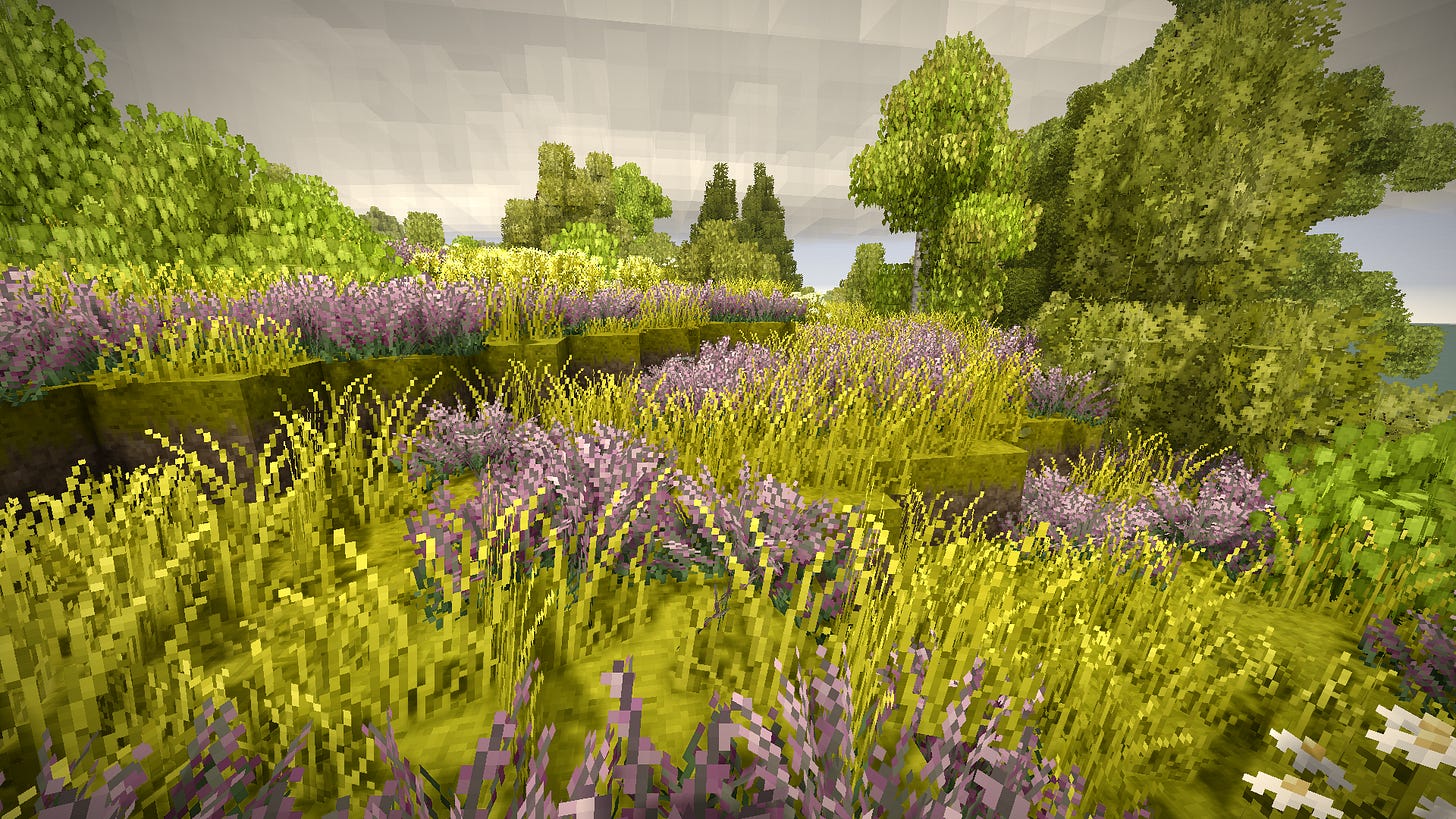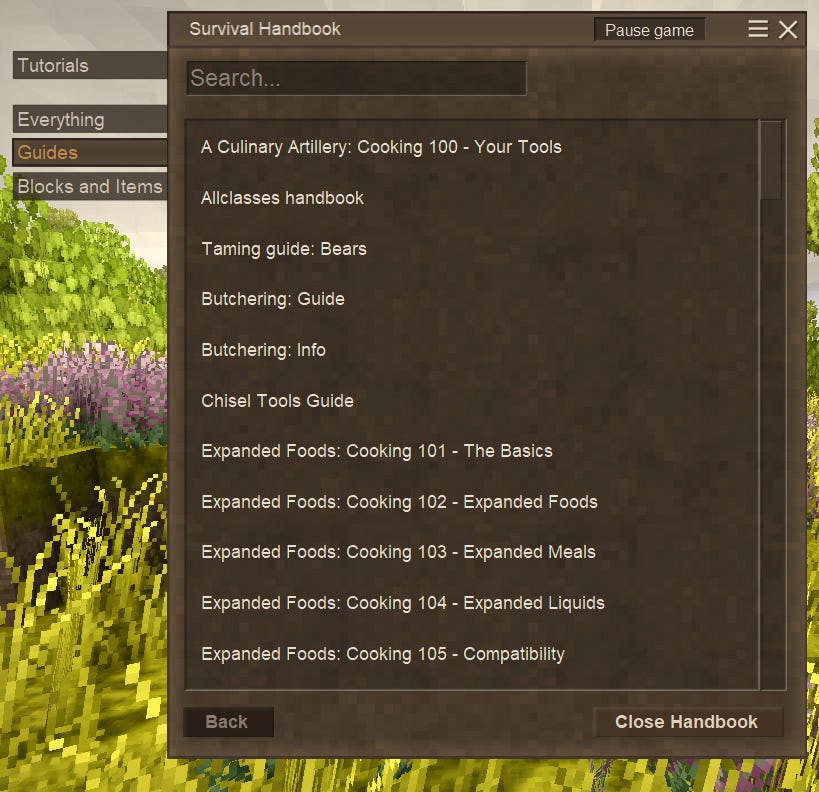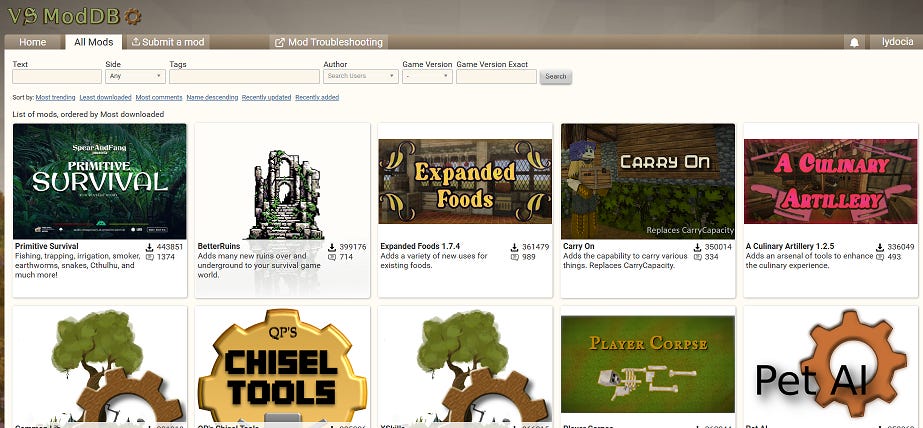Vintage Story
Vintage Story describes itself as 'an uncompromising wilderness survival sandbox game inspired by eldritch horror themes.
It started out as a Minecraft modpack called Vintagecraft, which aimed to do more or less what Vintage Story does but in Minecraft. What it evolved into, I can best describe as “it looks like Minecraft, but it’s much more mature”.
While you can spend a good thirty minutes in Minecraft working your way up to diamond armour, you’ll spend sixteen hours in Vintage Story just trying to mine enough copper to get your basic tools, and then hopefully survive long enough to go find tin to process to the bronze age. Everything is more hands-on, more realistic and more well-paced.
Storyline
This segment of my review is going to be severely underwhelming, because yes, there is a storyline, but I haven’t seen any of it yet because I’ve been so focused on exploring, base-building and decorating. Which in itself is a great attestation of how wonderful a game it is, in terms of how I play games.
Vintage Story is set in a postapocalyptic ruined world, reclaimed by nature and plagued by temporal instability, which manifests in the shape of annoying little rifts popping up too close to your base, from which Eldritch-lite horrors spawn to ruin your day. Peer into the rift too deeply, and your (both metaphorical and literal) gears will spin in overdrive, and you’ll end up somewhere I haven’t had the guts to go before.
I know the goal is for players to, first of all, survive and then piece together the remnants of a fallen civilization. I haven’t personally gone down that path yet, as I’m enjoying the sandbox of it all just a little too much. Such a versatile game!
Gameplay
If you’ve played Minecraft, you know most of how to play Vintage Story, and if you’ve ever played Minecraft with mods, you’ll recognise even more.
The same basic idea applies: the world is made up of blocks that you can mine to build your own things with. You can grow crops, raise animals, explore, find landmarks with loot, defeat monsters that come out mostly at night and in dark places, craft gear and workbenches to craft even more things with.
Vintage Story is very hands-on with things. You don’t just throw your copper ore in a furnace, you have to actually put it in a crucible, use tongs to not burn your hands on the molten metal, heat it up using coal because wood or peat doesn’t go that high in temperature, use molds to shape tool parts, or heat up ingots to smash them on an anvil to achieve the same.
The game aims for realism in its tech progression, meaning you can’t just dig your way to bedrock and find 24 diamonds to complete your diamond armour set in under 30 minutes. Vintage Story feels like a much slower and more mature Minecraft. You’ll have to explore to find different materials, let your metals cool off overnight, soak your animal hides in tannine and let them sit in different barrels to produce leather - all in all just a lot of resources that go through a lot of steps to craft things. If that’s your kind of thing, this game will absolutely blow your mind.
Even more than in Minecraft, you get a lot of freedom in how to shape your world. With its chiseling mechanic, Vintage Story allows you to alter blocks and combine them in any way you can imagine, which honestly is very distracting from all the important things you need to do like go find food to survive, resulting in dying a lot while chiseling out a cosy hearthfire type thing for your kitchen.
Atmosphere
Vintage Story is “inspired by eldritch horror themes”, which is… accurate.
I am notoriously bad with horror games. I halfway literally die of jumpscares. I hate them with the passion of a thousand suns. So trust me when I say that Vintage Story, despite being inspired by eldritch horror themes and having creepy demogorgon-type creepies and crawlies trying to eat your face while you sleep, it really isn’t a scary game. It’s not scarier than a Minecraft creeper suddenly showing up behind you in a cave, and the monster designs really set the atmosphere while not being overly “where are my brown pants?”-scary.
Tutorial
You know me, I love a good tutorial. In my humble opinion, a good tutorial is the most important part of a game. If you can’t convey to players how to play your game, they can’t play your game - it really is that simple. A lot of games have really good concepts, but you have to delve into three wikis, read a dozen Reddit posts and join five and a half Discords in order to really know how to get started, and that just doesn’t do it for me. A good game has a good tutorial, and a good tutorial hits the right balance between hand-holding and intuitive nudging.
Vintage Story stands out in this field.
The game starts out with a little on-screen hand-holding in terms of “find stick, find rock, make knife”, which I like. It gives you a good feel of what basic resources to look for and where early on, showing the difference between the different rock types and which ones are good for “knapping” (shaping resources on a voxel-level using chiseling mechanics).
After that, it points you in the direction of in-game documentation, which is another one of my core principles in game design. I firmly believe that all the information about your game, both mechanics-wise and in terms of in-game lore, should be accessible inside your game. No external sources, no wikis, no guides needed - those should all be extra, for fans of the game who love to document and organise information.
Vintage Story has an in-game directory of tutorials, guides and information on every single block, item, machine, mechanic and material in the game.
Modding
Vintage Story was built from the ground up with modding in mind.
There are tons of mods available, without needing a third party software to enable or manage mods. Mods are easily installed by clicking the one-click-install button on the mod pages, which immediately and in real-time installs and activates them in your game.
You have probably noticed (or maybe you didn’t, which is why I’m pointing it out now) that some of the guides in the tutorial screenshot above, like Bear taming, AllClasses, Expanded Foods, are not vanilla, but mods. They have their tutorials/information seamlessly integrated in the existing handbook framework, which makes for a very immersive and well-supported integration of mods into the game.
I haven’t yet tried my hand at making Vintage Story mods myself - partially because I haven’t played enough of the game to know what I could still add, but mostly because I know how creating mods ruins my ability to still play the game, haha - but I have looked at how to get started.
There is a lot of good documentation readily available, and in terms of accessibility and complexity, it looks fairly easy compared to many other games, again because of the devs’ mentality of integrating modding into the core of the game.
You know how much I love modding, both adding mods to my games and creating mods myself, so this game is heaven for me!
TL;DR
Vintage Story is like a more mature, slower-paced and realistic Minecraft with eldritch horror vibes that don’t take away from the cosiness of the sandbox survivalcraft.
With stellar in-game tutorials, extensive mod support, and a slower, thoughtful pace, Vintage Story is a sandbox dream for players who love complexity, creativity, and immersion.
Absolutely recommend trying this out if you are ready to lose yourself and a good chunk of your time immersing yourself into this lovely world.












